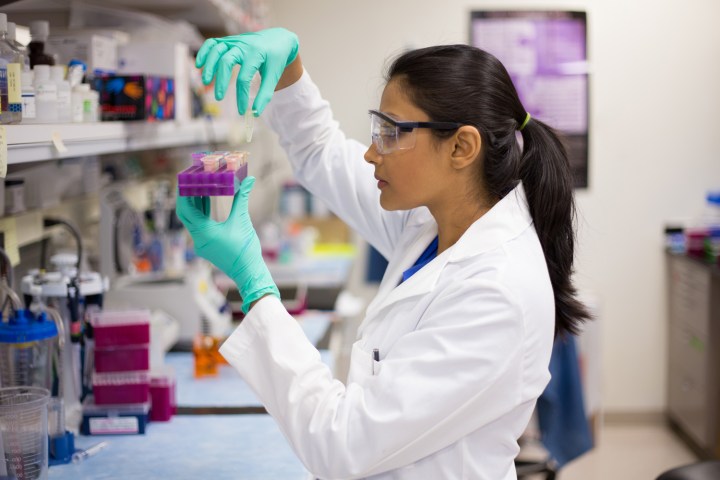
That’s now changed thanks to a groundbreaking piece of research in which scientists were able to observe speciation taking place in a laboratory setting, with one virus splitting into two new species over the course of a single month.
“Historically, this inability to directly observe the process [of speciation] has led some individuals to doubt the role of evolution in creating the many species that live today,” Justin Meyer, an assistant professor of biology at University of California, San Diego, told Digital Trends. “Not being able to show speciation in action is often a reason creationists cite for why Darwin’s theory is wrong and evolution does not occur. With this study, we have punched a major hole in their argument. Even more importantly, we have provided a novel experimental system where speciation can be observed in action and directly studied.”
The system Professor Meyer and his colleagues have created will be used to test many longstanding theories and move the study of speciation forward.

Meyer said that he first became interested in speciation when he enrolled on a course about it as an undergrad in 2002, taught by the evolutionary biologist Professor Richard Harrison.
“During the class we learned about a lot of data that supported sympatric speciation, however, there were always doubts and no way to convince the skeptics that sympatric speciation was possible,” he continued. “I became interested in this problem because it seemed to address a fundamental question about evolution. Is speciation an intrinsic property of life, or does it require an external factor like geography to catalyze the separation?”
Meyer was fascinated by the issue of whether or not it is possible to directly observe speciation.
“I didn’t come to the solution until many years later when I developed this bacteriophage lambda system,” he said. “Lambda rapidly evolved in laboratory conditions, so I could watch its evolution in action. Lambda particles interbreed or recombine their DNA with one another, so I could test the effects of recombination on its speciation. With this system in hand, we ran the experiment and sure enough, we witnessed speciation in allopatry, and even more importantly, in sympatry.”
What this means, Meyer said, is that under the right circumstances, populations will naturally split into two new species without any external driver — making it a natural automatic property of their biology.
Meyer has every reason to be happy, although he noted that it is somewhat bittersweet since Professor Harrison, the man who inspired him, passed away earlier this year at the age of 70.
“I would have never pursued this project if he hadn’t been such a fabulous teacher,” he told us. “I am very sad that he wasn’t alive to see this work published, although I did have a chance to share preliminary results a few years ago. It’s amazing the impact good teachers can have on one’s life.” Now that’s a sentiment everyone can agree with.
For more on the work carried out by Meyer and colleagues at UC San Diego and Michigan State University, check out their paper published in Science, titled “Ecological speciation of bacteriophage lambda in allopatry and sympatry.”


